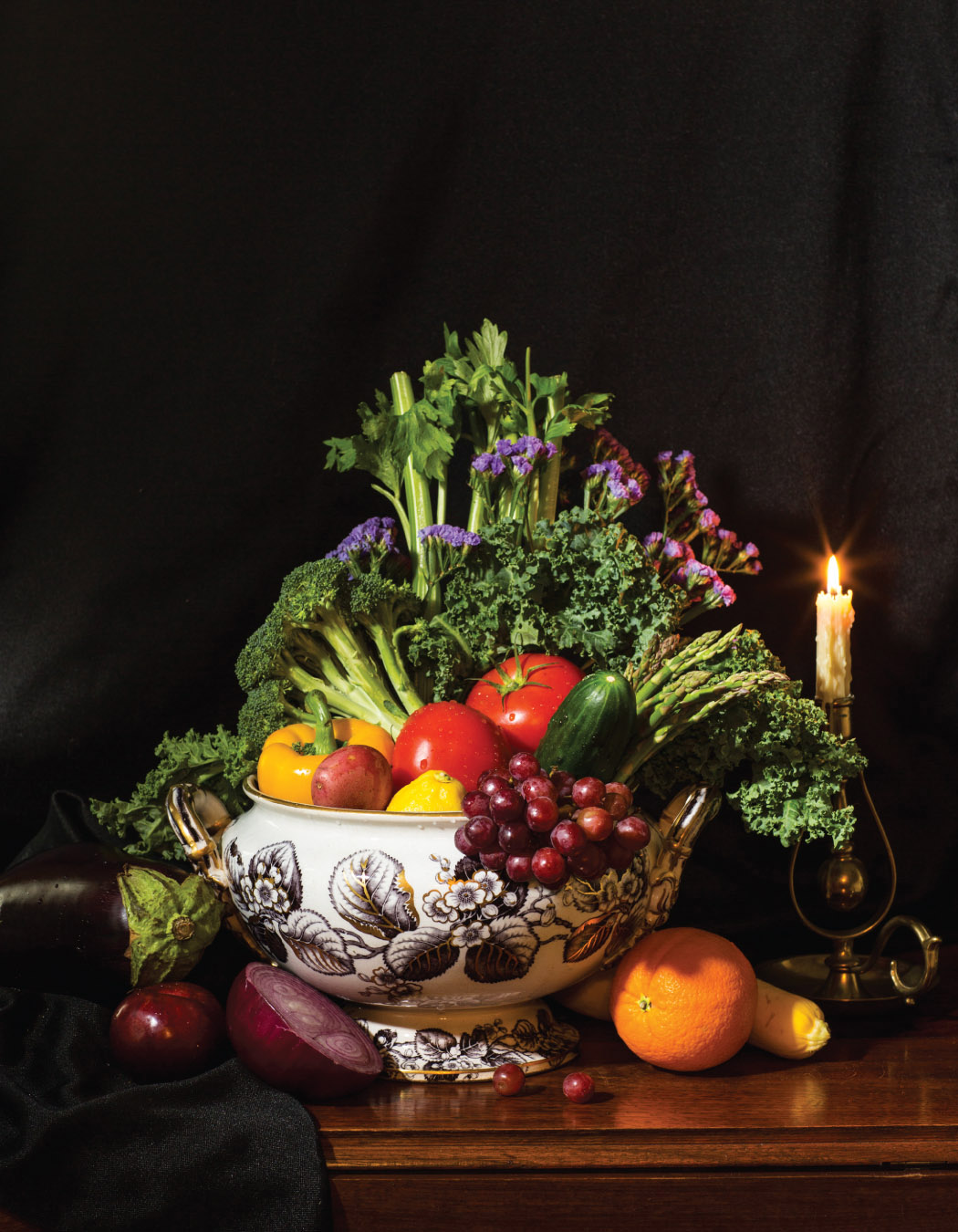
An imprint of The Rowman & Littlefield Publishing Group, Inc.
4501 Forbes Blvd., Ste. 200
Lanham, MD 2706
www.rowman.com
Distributed by NATIONAL BOOK NETWORK
Copyright 2020 Historic Savannah Foundation
All rights reserved. No part of this book may be reproduced in any form or by any electronic or mechanical means, including information storage and retrieval systems, without written permission from the publisher, except by a reviewer who may quote passages in a review.
Food photography by Deborah Llewellyn: pages iii, xvi, 18, 30, 46, 70, 106, 128, 136, 142, 144, 166, 168, 174, 194, 196, 226, and 234
Additional food photography by Jason B. James: pages 40, 48, 78, 110, 148, and 222
British Library Cataloguing in Publication Information available
Library of Congress Cataloging-in-Publication Data available
ISBN 978-1-4930-4905-9 (cloth: alk. paper)
ISBN 978-1-4930-4906-6 (electronic)
 The paper used in this publication meets the minimum requirements of American National Standard for Information SciencesPermanence of Paper for Printed Library Materials, ANSI/NISO Z39.48-1992
The paper used in this publication meets the minimum requirements of American National Standard for Information SciencesPermanence of Paper for Printed Library Materials, ANSI/NISO Z39.48-1992
In memory of J. Edwin Hendricks, loving husband and father, who inspired this project with a gift
CONTENTS
Guide
Women have been at the core of Historic Savannah Foundation since its establishment in 1955. When seven visionary women saw the Isaiah Davenport House (1820) as more than a blighted, aging, hulkthat it was worthy of preservationthus began an organization that fostered a movement which, in turn, sparked a renaissance that Savannah has enjoyed for more than a half century. Mary Randolph was a visionary in her own right. Her recipes and, more importantly, her cooking system recognized, taught, and celebrated regional fareparticularly Southern cooking. As a lagniappe, she included insights into Southern traditions and the role of women.
Like Historic Savannah Foundations founders who gazed upon the Davenport House, Mary Randolph saw more than what was there. They understood that one old building (or one old recipe) may not change the world, but a collection of them can. Indeed, it has. Mary Randolphs pioneering and widely published cookbook has educated numerous and deliciously fed generations. Likewise, Historic Savannah Foundation has saved more than four hundred buildings and inspired other cities and organizations to use a revolving fund to acquire and save endangered historic buildings.
The foundation and the Isaiah Davenport House, now its flagship property, are grateful to the authors for reviving a historic record of cooking in the South, but also for updating it and making it relevant today. When the Historic Savannah Foundation saves historic buildings, the real success comes when that building is rehabilitated for contemporary use. The recipes for these successes are tried and true. Whether its turtle soup or turnip ragoutor whether its a turreted Queen Ann or a modest shotgunMary Randolph (and now Sue Hendricks and Chris Hendricks) and Historic Savannah Foundation are serving up history in the twenty-first century.
The icing on the (Savoy Sponge) cake is that proceeds from the sale of this book directly support the mission of Historic Savannah Foundation and the stewardship of the Davenport House. The foundation saves buildings, places, and stories that define Savannahs past, present, and future. This cookbook is helping us do just that.
The foresight of the Hendricks family to preserve and promote Southern culinary heritage and one of the Souths most beautiful cities cannot be overstated. We are grateful for their wisdom and generosity.
Daniel G. Carey
Past President and CEO (2008-2019)
Historic Savannah Foundation
In conjuring up a list of earthly delights, Southern cooking ranks high for many. The anthropologist in us wonders how these miracles of gastronomy came to be: okra soup, fried perch, macaroni and cheese, and sweet potato pie!
The first person to codify and publish recipes in the American Southeast was Mary Randolph of Virginia. Her work is the genesis for documenting regional cooking that has become world renowned. People, like myself, who work in historic sites and house museums and whose job it is to tell the story of daily life in the Antebellum South, have for years looked to a facsimile of Randolphs 1824 cookbook for source material. When Chris Hendricks, a friend and a well-respected (and beloved) scholar of eighteenth and nineteenth century history, told me that he and his mother, Sue Hendricks, a former journalist, were updating Randolphs The Virginia Housewife for contemporary cooks, I was delighted. I thought to myself, Every historic house curator and foodie interested in heritage cooking in the Southeast is going to want a copy.
While Randolphs work provides fantastic documentation of historic recipes, recreating her recipes is tricky, and for many, like myself, a mystery of the past. For example, interpreting the meaning of shake oysters over the fire till they are quite hot in making oyster sauce for a turkey proved an insurmountable obstacle.
Several years ago, a colleague studying visitor motivation at Colonial Williamsburg said that visitors often say the reason they wanted to come to the restored town was to be transported back in time. They wanted to be back then or at least be awash in authenticity. You cannot get the same sense of back then by reading a recipe, as you can by eating the food in question. You have to taste it! How exciting it is to have treasured heritage recipes translated into a version that can be created by the everyday cook. Thanks to Sue and Chris, we can now make reasonable versions, sans the open fire, of dishes that graced the tables of our forebears. For those of us in the house museum business, we can now provide our visitors, as well as our friends and family, with a richer and tastier understanding of the past that reverberates today. All of this talk makes me want an apple fritter (see )!
Jamie Credle
Director
Davenport House Museum, a property of Historic Savannah Foundation
The unusual nature of this endeavor required the assistance of many talented individuals with diverse skills. The research for the book took place at several academic institutions, but we particularly would like to thank the staffs of the John D. Rockefeller Jr. Library at the Colonial Williamsburg Foundation, the Martha Blakeney Hodges Special Collections and University Archives at the University of North Carolina at Greensboro, Chris Semtner of the Edgar Allan Poe Museum in Richmond, and especially Pam Seay of the Virginia Historical Society for her patronage of the project and for overseeing the peer review process. With her boundless energy and enthusiasm, Jamie Credle, director of the Davenport House Museum, lent constant and unflagging support, even offering the use of the museums porcelain collection for the photography. Daniel Carey and Susan Adler of the museums parent institution, the Historic Savannah Foundation, backed the effort and worked to ensure its quality and academic character. We thank Janice Shay for sharing her experience and guidance as we worked through the design and publication process; Deborah Llewellyn and Jason James for their excellent photography; Erin Purdy for her remarkable transcription work; Greta and Quinn Bledsoe for making a special trip over to Arlington; Cindi Pietryzk for her skillful copy editing; and Ma Ni for her help during the photo shoots. Jennifer McCarthy lent invaluable assistance in too many ways to even begin to recount. Thanks to Katherine Durso and David Riemen for their help in food production. Thank you to the members of our familyJim and Lisa, Lee and Dennis, Grayson, and Williamfor their love and support. And finally, thank you to Brian Martine, who acted as sous-chef, art director, and chief supporter. This book could not have happened without any of you.


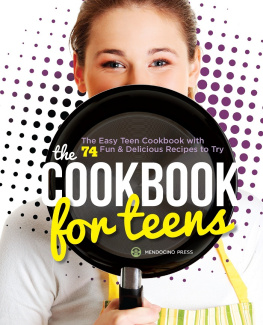
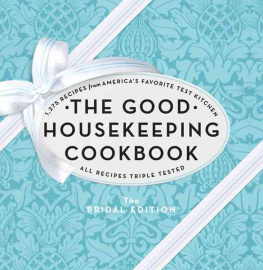
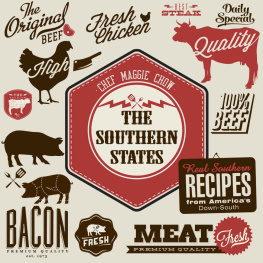
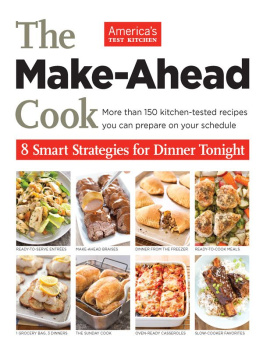



 The paper used in this publication meets the minimum requirements of American National Standard for Information SciencesPermanence of Paper for Printed Library Materials, ANSI/NISO Z39.48-1992
The paper used in this publication meets the minimum requirements of American National Standard for Information SciencesPermanence of Paper for Printed Library Materials, ANSI/NISO Z39.48-1992